InterviewSolution
Saved Bookmarks
This section includes InterviewSolutions, each offering curated multiple-choice questions to sharpen your knowledge and support exam preparation. Choose a topic below to get started.
| 8351. |
Question : What conditions enable RuBisCO to functio as an oxygenase ? Explain the ensuing process. |
|
Answer» Solution :RuBisCO is an enzyme abundantlyavailable for photosynthesis. It works in dual conditions. When conditions. When consentratio of `CO_(2)` is SUFFICIENT in ATMOSPHERE is works as carboxylase. But if CONCENTRATION of `O_(2)` increases then its property changes and it connects with `O_(2)` and works as OXYGENASE. So `CO_(2)` enters into `C_(2)` pathway with pressure so photosynthesis can occur and `CO_(2)` can be lost. |
|
| 8352. |
Question : What constitutes the cambial ring? |
|
Answer» Solution :Interfascicular cambium : Interfascicular cambium and Intrafascicular cambium COLLECTIVELY form cambial ring. It is formed due to meristematic ACTIVITY of them. The cambium which is found between xylem and phloem, is called Intrafascicular cambium and new cambium formed between TWO vascular bundle is called Interfascicular cambium. Cambium ring is FOAMED by connecting two TYPE of cambiums. |
|
| 8353. |
Question : What connects muscle to bone? |
|
Answer» ligament |
|
| 8354. |
Question : What comprises of bark in a tree? |
| Answer» Solution :All the TISSUES PRESENT OUTSIDE the vascular cambium for BARK. | |
| 8355. |
Question : What characteristics are used to identify the earthworms? |
|
Answer» Solution :In gardens, earthworms can be traced by their FECAL deposits known as worm castings on the soil surface. The earthworms can be identified using the following characteristics: • Long and cylindrical NARROW body, • Bilateral symmetry • It is light brown in colour with purple tinge at the anterior END. • The division of body into MANY segments or metameres, • The dorsal surface of the body is marked by a dark mid dorsal line n gardens, earthworms can be traced by their fecal deposits known as worm castings on the soil surface. The earthworms can be identified using the following characteristics: • Long and cylindrical narrow body, • Bilateral symmetry • It is light brown in colour with purple tinge at the anterior end. • The division of body into many segments or metameres, • The dorsal surface of the body is marked by a dark mid dorsal line 14-17 may be found swollen with a GLANDULAR thicnkening of the skin called the clitellum. |
|
| 8356. |
Question : What characteristics distinguish arthropods from annelidsand molluscs ? |
| Answer» Solution : The members of phylum Arthropoda differ from annelids and molluscs in (i) the presence of an exoskeleton made of chitin and protein rather than a shell made CHIEFLY of mineral salts, (ii) jointed legs, (III) DISTINCT groups of MUSCLES, derived from many body segments, that move separate PARTS of the exoskeleton, (iv) distinct mandiblesor chelicerae, and (v) absence of trochophore larva. | |
| 8357. |
Question : What characteristics are used in classifying animals ? Give an outline classification of the kingdom Animalia. |
| Answer» SOLUTION :Some important characteristics used in classifying ANIMALS are the FEATURES of body plan, body symmetry, nature of coelom, body development, body segmentation, cephalization, body TEMPERATURE, body support and protection, NOTOCHORD, and patterns ofdigestive, circulatory or reproductive system. | |
| 8358. |
Question : What changes occur during ecological succession? |
|
Answer» Diversity and stability increase |
|
| 8359. |
Question : What causes the opening and closing of guard cells of stomata during transpiration ? Describe point wise. |
|
Answer» Solution :Transpiration is the evaporative loss of water by plants. It occurs mainly through the stomata in the leaves. Besides the loss of water vapour in transpiration, exchange of oxygen and carbon dioxide in the leaf also occurs through pores called stomata. Normally stomata are open in the DAY time and close during the night. The immediate cause of the opening or closing of the stomata is a change in the turgidity of the guard cells.  Opening and closing of stomata : The inner WALL of each guard cell, TOWARDS the pore or stomatal aperture is thick and elastic. When turgidity increases within the two guard cells flanking each stomatal aperture or pore, the thin outer walls bulge out and force the inner walls into a crescent shape and stomata open. The opening of the stoma is also aided due to the orientation of the microfibrils in the cell walls of the guard cells. Cellulose microfibrils are oriented radially rather than longitudinally making it easier for the stoma to open. When the guard cells lose turgor, due to water loss. The elastic inner walls regain their original shape. Usually the lower surface of a DORSIVENTRAL (often dicotyledonous) leaf has a greater number of stomata. While in an isobilateral (often monocotyledonous) leaf they are about equal on both the surfaces. Transpiration is affected by several external factors : (1) Temperature (2) Light (3) Humidity (4) WIND speed Plant factors : Number and distribution of stomata Percent of open stomata Water status of the plant Canopy structure |
|
| 8360. |
Question : What causes the leaves of grasses to roll in dry weather? |
| Answer» Solution :ACTIVITY of builliform cellis PRESENT in the LEAVES of grasses. | |
| 8361. |
Question :What causes obstruction in the cystic duct, hepatic duct and hepato-pancreatic duct? |
| Answer» Solution :N/A | |
| 8362. |
Question : What causes bronchitis? |
|
Answer» DECREASE in the SURFACE AREA of alveoli |
|
| 8363. |
Question : What can we conclude from the statement that the action and absorption spectrum of phtosynthetic overlaps? At which wavelength do they show peaks. ? |
Answer» Solution :ABSORPTION Spectrum This depicts the absorption of light of different wavelenght by chlorophyll-a,b,xanthophyll and carotenoids. Action Spectrum This shows the rate of photosynthesis in the plant in the light of different wavelenghts. 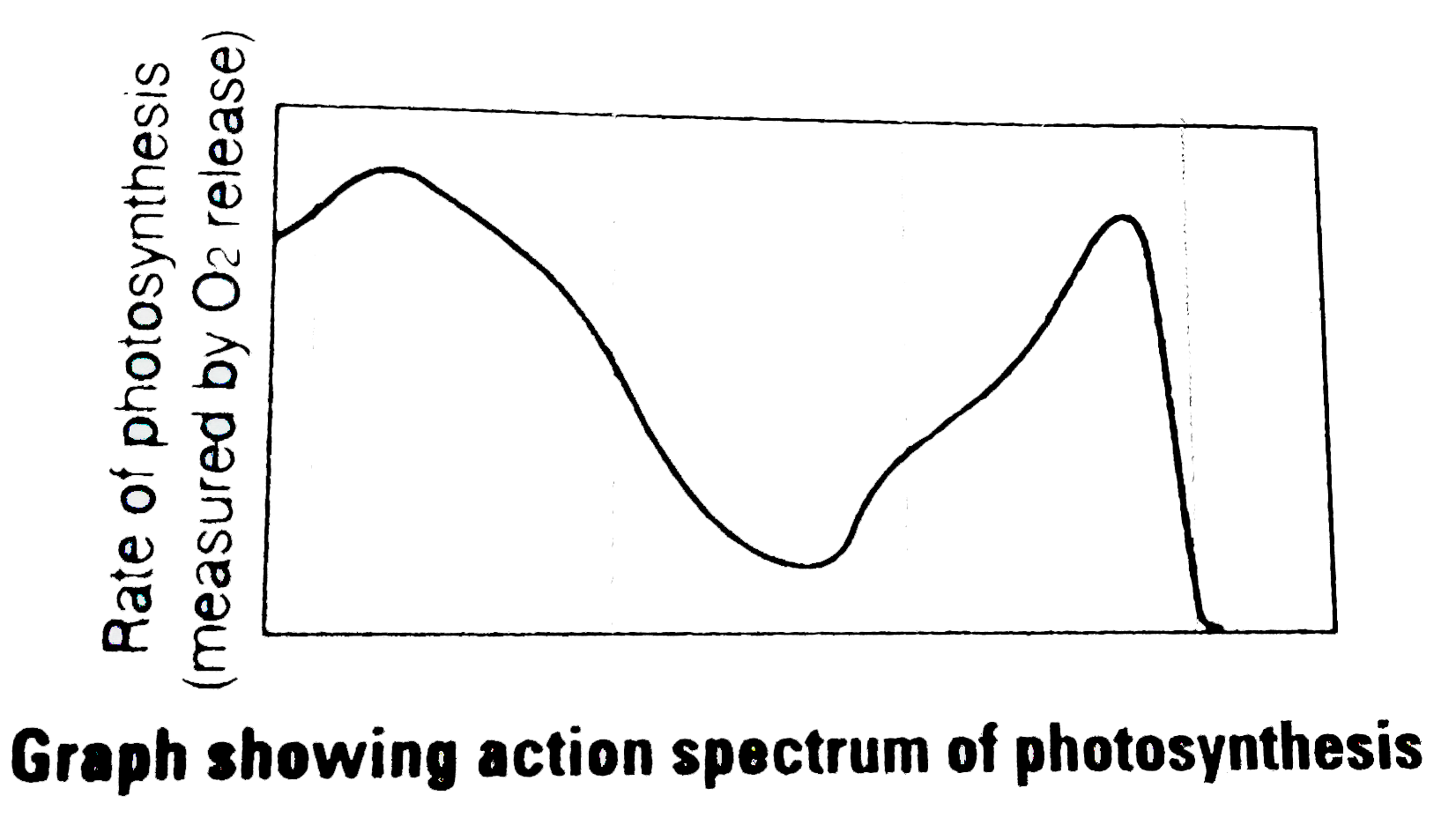 Super IMPOSED Absorption and Action Spectrum When we superimposed both action and absorption spectrum, it shows that in the region of red and blue light, the chlorophyll-a and b harness the MAXIMUM light ENERGY and are the main photosynthetic pigments. 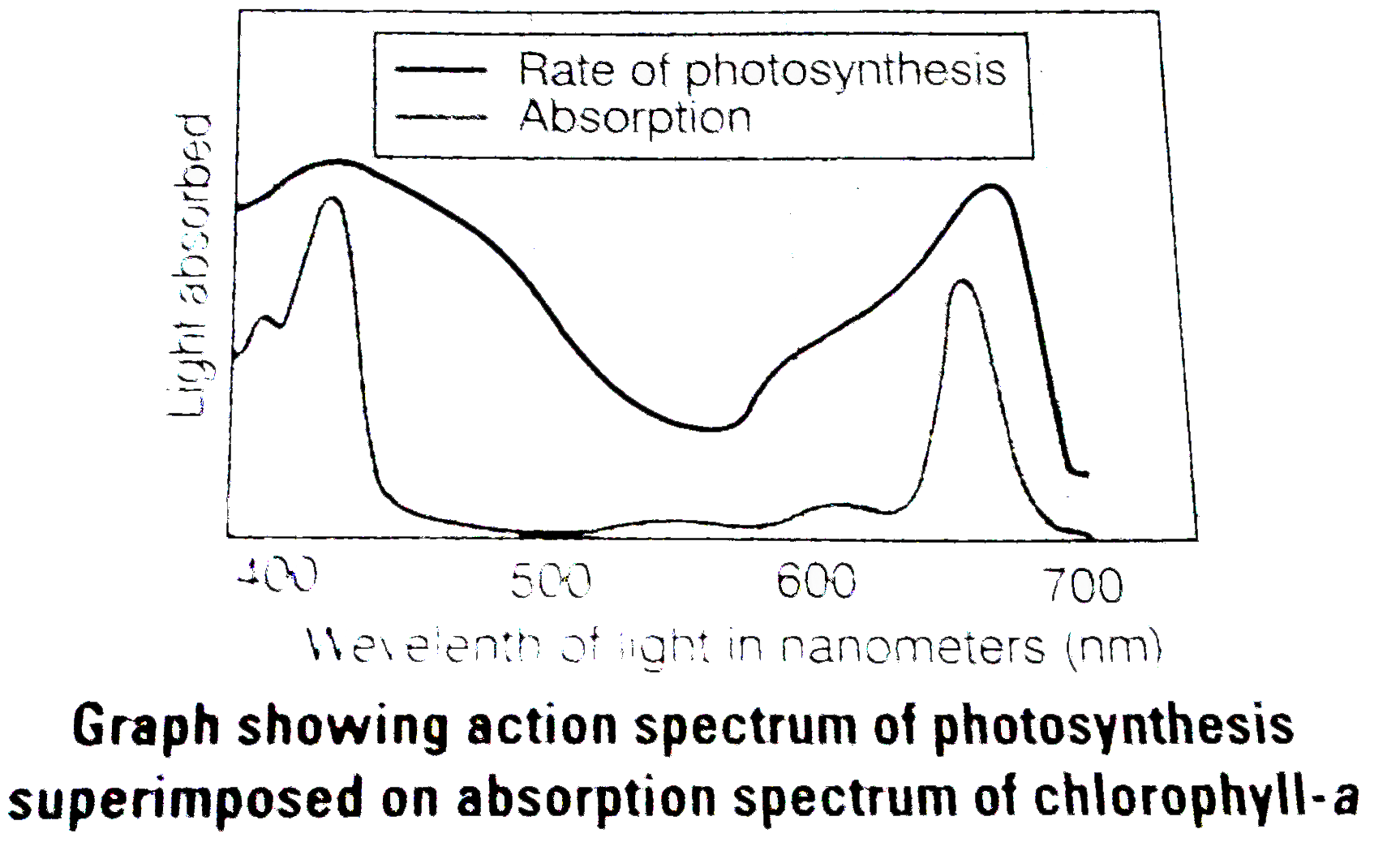
|
|
| 8364. |
Question : Whatcan we conclude from the statement that the action and absorption spectrum of photosynthesis overlap ? At which wavlenght do they show peaks ? |
Answer» Solution :Absorption spectrum : This spectrum shows various wavelenghtof chlorophyll - a, p, xanthophyll and carotenoids.  Active spectrum (functional). It shows rate of photosynthesis of plants in various more lenghts of light .  Absorbtionspectrum and best observationof functional spectrum. Chlorophyll-a and b arephotosynthetic pigments which absorb MAXIMUM light energy in red and blue light. So rate of photosynthesis is more in these two regions.The activity of red light is on the top in 660 - 770 NM and 390 - 430 nm WAVELENGHT respectively. 
|
|
| 8365. |
Question : What can we conclude from the statement that the action and absorption spectrum of photosynthesis overlap? At which wavelength do they show peaks? |
|
Answer» Solution :Overlapping of action and absorption spectrum indicates that light absorbed is used for carrying on photosynthesis. Peaks for action and absorption spectrum is shown in BLUE VIOLET and red regions of spectrum. This is true for chlorophyll. CAROTENOIDS do so in other regions of spectrum. |
|
| 8366. |
Question : What briefly about laticiferous tissues. |
|
Answer» Solution :Laciceferous of Laticiferous tissues of Laticifers. It isconcerned with secretion of latexor an emulsion or oils, alkaloids, RESINS, proteins and sugar. It consists of thin walled, ELONGATED BRANCHED ducts. The laticifers are of two types (a) Latex vessels (b) Latex cells. These occur irregularly distributed in the mass of parenchymatous cells. (a) Latex cells are called simple laticifers or non-articulated laticifers which many be unbranched or may be branched profusely bu do not fuse together to form a network quite common in the members of families Apocynaceae, Asclepiadaceae, EUPHORBIACEAE and Moraceae (e.g. milkweed, Euphorbia, Ficus etc.) (b) Latex vessels ( Articulated laticifers) are formed by union of latex cells ( hence called compound Laticifers also), are quite common in family Papaveraceae ( poppy family), Caricaceae ( papaya family), Compositae, Musaceae ( BANANA family) |
|
| 8367. |
Question :What attributes does a chromatid require to be classified as a chromosome? |
| Answer» Solution : Chromatid is a COPY of a chromosome. It attaches with centromere with its other characteristics. Chromosome MEANS two CHROMATIDS ATTACHED with centromere. | |
| 8368. |
Question : What are Zoological Parks ? |
|
Answer» SOLUTION :Zoological PARKS are the places where WILD ANIMALS are kept in protected environments under human care and which ENABLE us to learn about their food habits and behaviour, All animals in a Zoo are provided, as far as possible, the conditions similar to their natural habitats. Children love visiting these parks commonly called Zoos. |
|
| 8369. |
Question : What is inulin? |
| Answer» | |
| 8370. |
Question : What are non essential amino acids? |
| Answer» | |
| 8371. |
Question : What are virusoids? |
| Answer» Solution :Virusoids are the small CIRCULAR RNAs which are SIMILAR to VIROIDS but they are always linked with larger MOLECULES of the viral RNA. | |
| 8372. |
Question : What are viroids ? |
| Answer» Solution :VIROIDS are small, single-stranded circular RNAagents which INFECT PLANTS. | |
| 8373. |
Question : What are Viroids? |
|
Answer» Solution :In 1971, T.O. Diener discovered a new infectious AGENT that was smaller than viruses and caused potato spindle tuber DISEASE. It was found to be a free RNA, it lacked the protein coat that is found in viruses, hence the NAME viroid. The RNA of the viroid was of low molecular WEIGHT. |
|
| 8374. |
Question : What are vestigial organs ? |
|
Answer» Solution :Structures that are of no use to the possessor, and are not necessary for their existence are called VESTIGIAL organs. Eg. HUMAN appendix is the REMNANT of caecum which is FUNCTIONAL in the digestive tract of HERBIVOROUS animals like rabbit. |
|
| 8375. |
Question : What are vernacular names ?Give anexample. |
| Answer» Solution :Vernacular NAMES are KNOWN as COMMON names. Example: Albizia amara L. is called as Usilai in South Tamil Nadu and Thurinji in North Tamil Nadu. | |
| 8376. |
Question : What are urochordates? |
| Answer» Solution :The CHORDATES which have notochord only in the tail REGION of the larval stage are called UROCHORDATES e.g. ASCIDIAN. | |
| 8377. |
Question : What are ureotelic animals? |
| Answer» Solution :The ANIMALS which EXCRETE UREA along with water are CALLED ureotelic animals. Less water is SPENT e.g. man. | |
| 8378. |
Question : What are urecotelic animals? |
| Answer» Solution :The ANIMALS which excrete uric acid in the FORM of pellets are called urecotelic animals. Very less water is SPENT e.g. BIRDS. | |
| 8379. |
Question : What are tylosoids? |
| Answer» Solution :In ANGIOSPERMS , the sievetubesare BLOCKED by tylose- likeingrowthsfrom the neighbouringparenchymatous cells . Example : BOMBAX. These are called TYLOSOIDS. | |
| 8380. |
Question : What are tunnel proteins ? |
| Answer» SOLUTION :Large integral protein MOLECULES that LIE throughout the phospholipid matrix and PROJECT on both the SURFACES. | |
| 8381. |
Question : What are true ribs? What is their number? |
| Answer» SOLUTION :TRUE ribs are attached to the vertebral COLUMN at the back and STERNUM in FRONT. There are 7 pairs of true ribs. | |
| 8382. |
Question : What are true ribs ? Why ? |
| Answer» Solution :The first SEVEN pairs of RIBS are called TRUE ribs or vertebro sternal ribs. Donally they attached to thoracic vertebrae and ventrally attached to sterum with the HELP of hyaline cartilage. | |
| 8383. |
Question : What are trichomes? State their functions. |
| Answer» Solution :Trichomes are multicellular epidermal hairs on the stem, SEEDS or fruits. Tricomes HELP in PROTECTION,disperal of fruits and seeds and REDUCTION in WATER loss. | |
| 8384. |
Question : What are trichocysts? |
| Answer» Solution :Trichocysts are ejective in nature which are DISCHARGED on stimulation to form LONG thread for the tasks of OFFENCE, defence and ADHESION. | |
| 8385. |
Question : What are tonofibrils ? |
| Answer» SOLUTION :FINE FILAMENTS RADIATING from thickened cell membrane of DESMOSOMES. | |
| 8386. |
Question : Whatis tonoplast ? |
| Answer» Solution :In PLANT cells vacuoles are large, bounded by a single UNIT MEMBRANE called Tonoplast. | |
| 8387. |
Question : What are thylakoids? Why are these called structural and functional units of chloroplasts? |
| Answer» SOLUTION :Thylakoids are oval-shaped SACS which lie super-imposed in the stroma of CHLOROPLASTS to FORM grana. These have enzymes for photochemical reactions of photosynthesis as have chlorophyll containing QUANTASOMES. | |
| 8388. |
Question : What are thylakoids? What is their function? |
| Answer» SOLUTION :These are fluid filled flattened sacs that FORM the membrane SYSTEM in chloroplasts. THYLAKOID membranes CONTAIN the chloroplast pigments. | |
| 8389. |
Question : What are three major types of cells found in the gastric gland ? Name their secretions. |
|
Answer» Solution :(1) Goblet CELLS - secrete mucus. (2) Peptic/chief - cells (Zymogenic cells) secretes pepsinogen and prorenin. (3) OXYNTIC cells they secrete ditute HCL. |
|
| 8390. |
Question : What are three fractions of water in the soil? |
|
Answer» Solution :(a) Gravitational water. The fraction of water which reaches the water table by passing through spaces between soil particles from surface is called gravitational water. It is not available to plants because it lies beyong the REACH of ROOTS. (b) Capillary water. Water HELD in small pores against the force of gravity by capillary FORCES is called capillary water. It is readily available to plants for absorption by roots. (c) Hygroscipic water. The water which is absorbed on soil particles is called hygroscopic water . This film of water is held by strong attractive forces between soil particles and water molecules. This water is not available to plants. |
|
| 8391. |
Question : What are therophytes ? |
| Answer» SOLUTION :THEROPHYTE is a plant that completes its life cycle in one growing season, EG. Peas. | |
| 8392. |
Question : What are the various stages of meiotic prophase - I? Enumerate the chromosomal events during each stage ? |
|
Answer» Solution :Prophas-I occurs over a ong duration and involves several complicated CHANGES in meiotic cell division. It is important because gentic recombination and variation in sexually reproducing organism occurs due to the events of this phase. Leptotene (i) The chromatin network opens out and threads become clear. (ii) The chromosomes are thin, slender and long. (iii) Chromosome number is diploid  Zygotene (i) Corresponding chromosomes become intimately associated (ii) The process of pairing is known as synapse. it is so EXACT the pairing is not merely between corresponding chromosmes but between corresponding INDIVIDUAL units. (iii) the chromosomes become shorter and thicker.  Pachytene or Pachynema (i) The synaptic chromosomes become vergy intimately associated (ii) the pair of chromosomes becomes short and thick. (iii) Crossing over occurs at this stage. Chiasmata are clearly seen 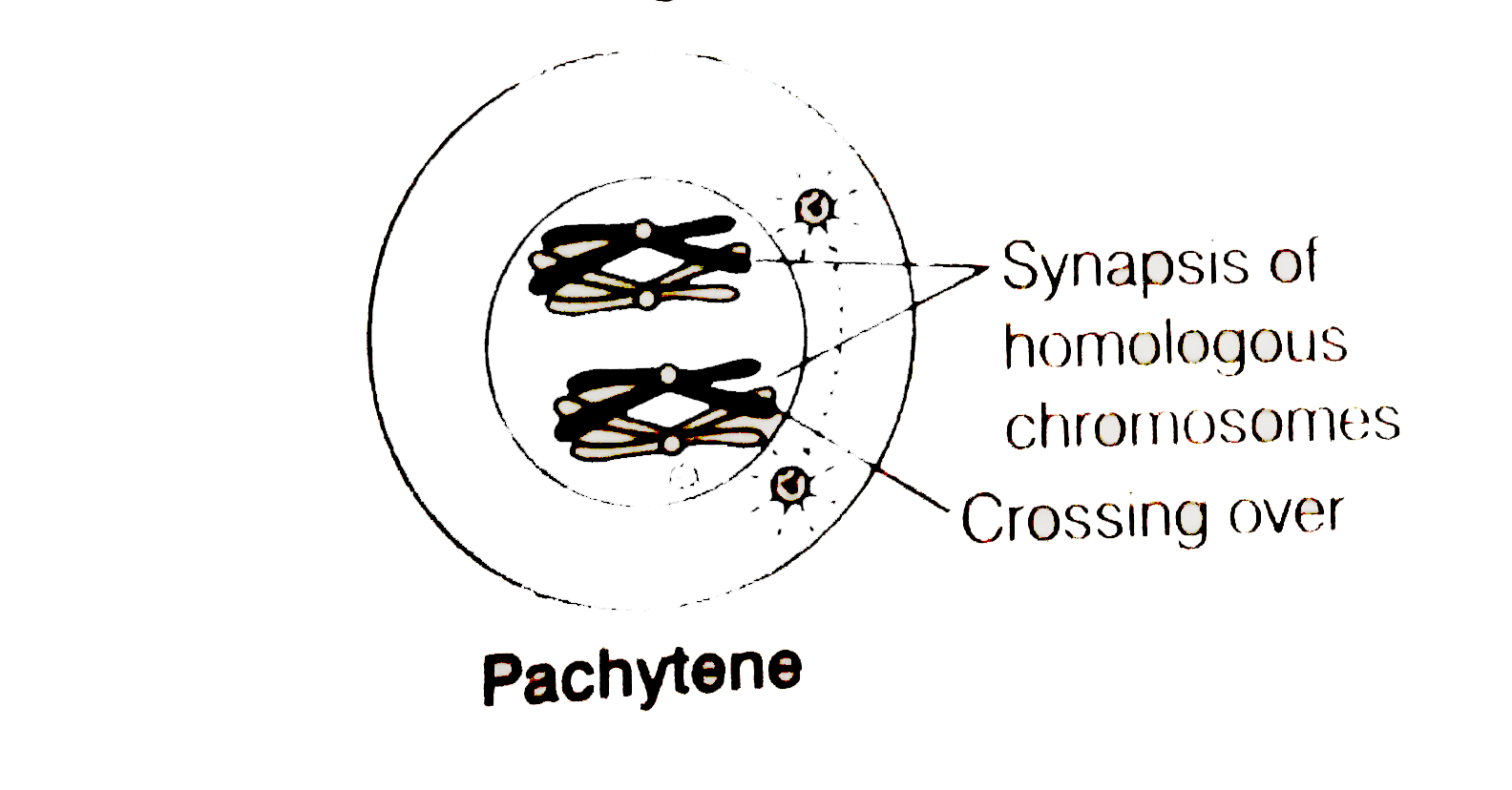 Diplotene (i) Homologous chromosomes start separating from ONE another. (ii) Chiasmata tend to slip out of the chromosomes. This is knwon as terminalisation of chiasmata. (iii) Chromosomes start separating out but the separation is not complete. (IV) Nuclear membrane and nucleolus start disappearing 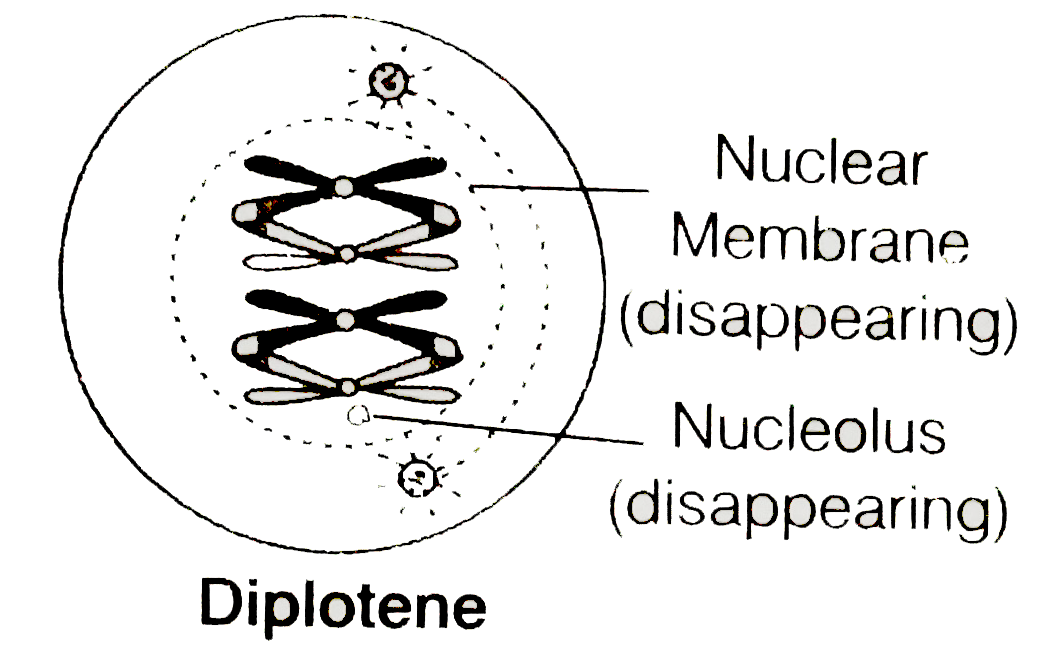 Diakinesis (i) The bivalents condense further and get randomly distributed. (ii) The separation of paired chromosomes is almost complete. (iii) Terminalisation of chiasmata is almost complete. (iv) Nuclear membrane and nucleolus disappear. 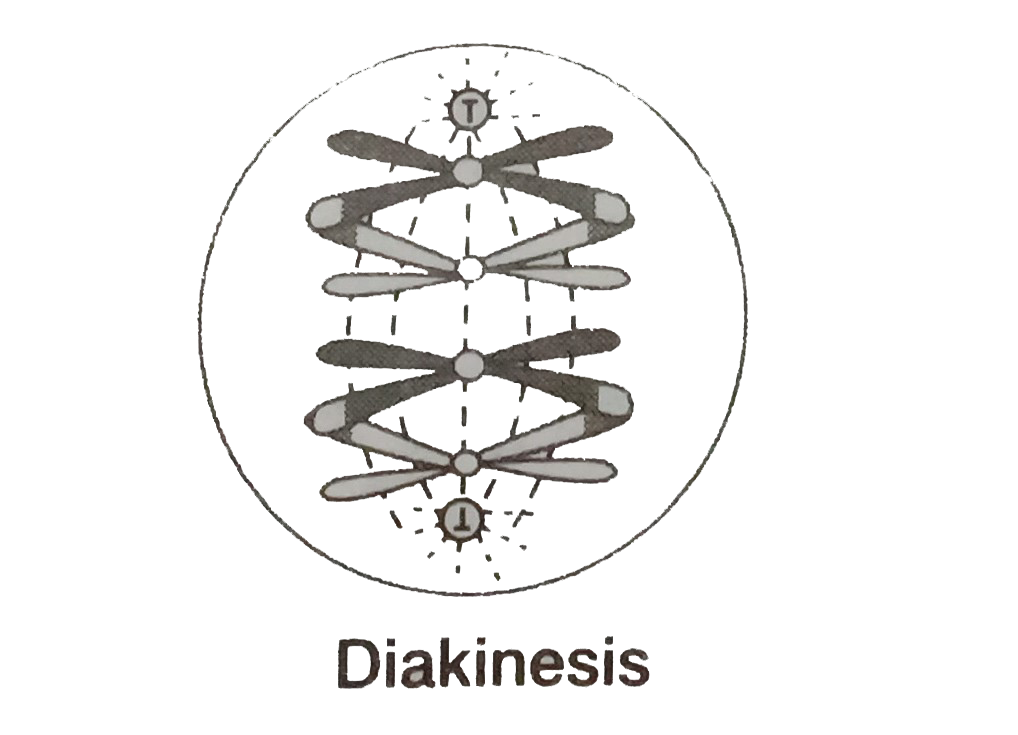
|
|
| 8393. |
Question : What are the various races of Bombyx mori. |
|
Answer» Solution :On the basis of the moults they undergo in the larval STAGE, B. mori is divided into three RACES. They are: 1. Tri moulters - 3 moults 2. Tetra moulters - 4 moults 3. Penta moulters - 5 moults On the basis of voltinism (the NUMBER of broods raised PER year), three kinds of races are recognised. They are: 1. Univoltines - ONE brood only 2. Bivoltines -two broods only Mutlivoltines - more than two broods |
|
| 8394. |
Question : What are the various enzymatic types of glandular secretions in our gut helping digestion of food? What is the nature of end products obtained after complete digestion of food? |
|
Answer» Solution :Among various enzymatic secretions, gastric juice is released in stomach whereas the bile, pancreatic juice and the intestinal juice are the secretions released into the small intestine. Pancreatic juice and bile are released through the hepato-pancreatic duct. Gastric juice contains hydrochloric acid and proenzyme - pepsinogen and prorennin. HCl maintains a strongly acidic pH which converts these proenzymes into pepsin and RENNIN (in infants) respectively. These enzymes act on proteins and convert them into simpler form, peptones. The pancreatic juice contains inactive enzymes trypsinogen, chymotrypsinogen, procarboxypeptidases, amylases, lipases and nucleases. Trypsinogen is activated by an enzyme, enterokinase, (secreted by the intestinal mucosa) into active trypsin, which in turn activates the other enzymes in the pancreatic juice. The bile released into the duodenum contains bile PIGMENTS (billirubin and billiverdin), bile salts, cholesterol and phospholipids but no enzymes. Bile helps in emulsification of fats, i.e., breaking down of the fats into very small micelles. Bile ALSO activates lipases. The secretions of the brush border cells of the mucosa along with the secretions of the globlet cells constitute the intestinal juice or succus entericus. The juice contains a veriety of enzymes like disaccharidases (e.g., maltase), dipeptidases, lipases, nucleosidases, etc. The mucus along with the bicarbonates from the pancreas protects the intestinal mucosa from acid as well as provide an alkaline medium (pH 7.8) for enzymatic activities. Sub-mucosal glands (Burnner's glands) also help in this process. Various reactions involved in this process are as follows `{:("Pepsinogen" OVERSET(HCl)to"Pepsin"),("Proteins" overset("Peptine")to "Peptones"):}` (ii) `"Peptones" overset("trypsin"//"Chymotrypsin")underset("Carboxypeptides")to"Dipeptides"` `"Dipeptides" overset("Dipeptidases")to "Amino acids"` (iii)`{:("Carbohydrates" overset("Amylase")to "Disaccharides"),("Maltose"overset("Maltase")to "Glucose + Glucose"),("Lactose"overset("Lactase")to "Glucose + Galactose"),("Sucrose"overset("Sucrase")to "Glucose + Fructose"):}` (IV) `"Fats" overset("Lipases")underset("hydrolysed")to "Diglycerides" to "Monoglycerides"` `"Di and Monoglycerides" overset(Lipases) to "Fatty acids + Glycerol"` (v) `"Nucleic acids" overset("Nucleases")to "Nucleotides"` ` "Nucleosides"overset("Nucleosidases")to "Sugar + Bases"` |
|
| 8395. |
Question : What are the varieties of marine fisheries. |
| Answer» SOLUTION :MACKERELS, SARDINES, SHARKS, CATFISH. | |
| 8396. |
Question : What are the uses of silk? |
|
Answer» Solution :Uses of Silk 1. Silk fibers are utilized in preparing silk clothes. Silk fibers are now combined with other natural or synthetic fibers to manufacture clothes like Teri-Silk, Cot-Silk etc. Silk is dyed and printed to prepare ornamented FABRICS. They are generally made from Eri-silk or spun silk. 2. Silk is used in industries and for military purposes. 3. It is used in the manufacture of fishing fibers, parachutes, cartridge bags, insulation COILS for telephone, wireless receivers, tyres of racing CARS, filter fibres, in medical DRESSINGS and as suture MATERIALS. |
|
| 8397. |
Question : What are the uses of food? |
| Answer» Solution :The food we eat provides ENERGY and ORGANIC substances for growth and the replacement ofwom out and damaged tissues. It REGULATES and coordinates the various activities that take place in the body . | |
| 8398. |
Question : What are the uses of bacterial Nitrogen fixation? |
|
Answer» Solution :Symbiotic nitrogen fixation : Nitrogen fixation with nodulation 1. Rhizobium BACTERIUM is found in leguminous plants and fix atmospheric nitrogen. 2. This kind of symbiotic association is beneficial for both the bacterium and plant.Root nodules are FORMED due to bacterial INFECTION. 3. Rhizobium enters into the host cell and proliferates, it REMAINS separated from the host cytoplasm by membrane. |
|
| 8399. |
Question : What are the uses of algin ? |
|
Answer» SOLUTION :( a) Alginis USED as food . (b) It is usedfor making smooth ice creams . (c ) It is used in TEXTILE INDUSTRY and as gelling agent in pharmaceutical industry. |
|
| 8400. |
Question : What are the types of respiration present in bacteria? Explain any one of them. |
|
Answer» Solution :Two types of RESPIRATION is found in bacteria. They are 1. Aerobic respiration : 2. Anaerobic respiration : 1. Aerobic respiration : These bacteria require oxygen as terminal ACCEPTOR andwill not GROW under anaerobic conditions (i.e. in the ABSENCE of `O_(2)`). Eg: Streptococcus. Obligate AEROBES : Some Micrococcus species are obligate aerobes (i.e. they must have oxygen to survive). |
|